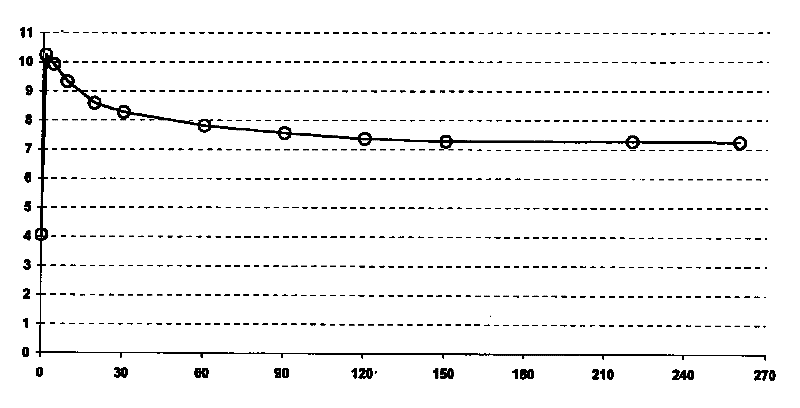Method for manufacturing papermaking pulp
A pulp and pulp refining technology, applied in papermaking, pulp bleaching, textiles and papermaking, etc., can solve problems such as unsatisfactory methods, and achieve the effect of improving yield and good yield
- Summary
- Abstract
- Description
- Claims
- Application Information
AI Technical Summary
Problems solved by technology
Method used
Image
Examples
Embodiment approach
[0084] According to one embodiment, the alkaline reagent comprises the aforementioned weak base in combination with other bases, such as sodium hydroxide (or potassium). However, it is preferred that the deacidification composition does not contain sodium (or potassium) hydroxide and that the alkaline agent consists of a weak base as defined above.
[0085] In contrast to sodium or potassium hydroxide, the use of a weak base such as magnesium hydroxide minimizes the extraction and dissolution of certain oxidized components of the wood after the action of ozone. Thus, the loss of yield is smaller and the pollution load caused by the extraction phenomenon is reduced.
[0086] The amount of alkaline agent used during this deacidification step is preferably less than or equal to 20 kg / metric ton of mechanical pulp, more particularly preferably less than or equal to 15 kg / metric ton of mechanical pulp, and ideally less than or equal to 10 kg / metric ton of mechanical pulp.
[0087]...
Embodiment 1
[0134] Pine wood pulp is prepared according to the TMP process. The pulp is subjected to ozone treatment during the refining stage. More precisely, the reject from the first stage refiner (refineur primaire) was treated with 2% ozone, the pH was adjusted with 5 kg caustic soda / metric ton of pulp, and then the ozone treated reject was mixed with The pass fraction from the secondary refiner was blended. The brightness of the pulp at the end of the refining / ozone treatment was 47.3%.
[0135] After refining / ozone treatment, a sequestration step is provided during which the pulp is treated with 4 kg of DTPA / metric ton of pulp (at 4% consistency and at a temperature of 70°C and at a pH of 6-7) Lasts 1 hour.
[0136] After the sequestration step, the pulp was subjected to a bleaching step (at 20% consistency, at a temperature of 70° C. and for a period of 2 hours).
[0137] For the preparation of pulp A (comparative example), the following parameters were additionally used:
[...
Embodiment 2
[0164] Pine wood pulp is prepared according to the TMP process. The pulp is subjected to ozone treatment during the refining stage. More specifically, the reject material from the first stage refiner was treated with 2% ozone, no pH adjustment, and the ozone treated reject stock was then mixed with the accept material from the second stage refiner. The pulp brightness at the end of the refining / ozone treatment was 48.3%.
[0165] After refining / ozone treatment, a sequestration step is provided during which the pulp is treated with 4 kg of DTPA per metric ton of pulp (at a consistency of 2-3% and at a temperature of 70°C and a pH of 6-7) Lasts 1 hour.
[0166] After the sequestration step, the pulp was subjected to a bleaching step (at 20% consistency, at a temperature of 70° C. and for a period of 2 hours).
[0167] For the preparation of pulp E, the following parameters were also used:
[0168] - a deacidification step lasting 3 hours between refining / ozone treatment and ...
PUM
| Property | Measurement | Unit |
|---|---|---|
| whiteness | aaaaa | aaaaa |
| whiteness | aaaaa | aaaaa |
| whiteness | aaaaa | aaaaa |
Abstract
Description
Claims
Application Information
 Login to View More
Login to View More - R&D
- Intellectual Property
- Life Sciences
- Materials
- Tech Scout
- Unparalleled Data Quality
- Higher Quality Content
- 60% Fewer Hallucinations
Browse by: Latest US Patents, China's latest patents, Technical Efficacy Thesaurus, Application Domain, Technology Topic, Popular Technical Reports.
© 2025 PatSnap. All rights reserved.Legal|Privacy policy|Modern Slavery Act Transparency Statement|Sitemap|About US| Contact US: help@patsnap.com


